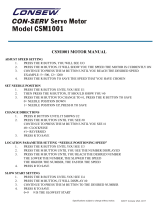
1
SECTION 1. SETTING UP THE MACHINE
Installing the Machine ................................................. 2
Adjusting the feet ................................................... 3
Names of Parts ........................................................... 5
Sub control panel ..................................................6
RCS unit (optional item) ........................................6
Standard accessories ............................................ 7
Assembling the Spool Stand ......................................9
Setting the Thread Cones or Spools of Thread ........10
Setting the thread cone .......................................10
Setting the spool of thread ..................................10
Installing the Hoop Supporter ................................... 11
Installing the RCS unit (optional item) ......................12
Connecting the Power Supply ..................................13
Direct PC-Link ..........................................................14
Threads ....................................................................15
Needles ....................................................................15
Stabilizers .................................................................15
Winding the Bobbin ..................................................16
Removing the bobbin case ..................................17
Inserting the bobbin ............................................. 17
Inserting the bobbin case ....................................18
Threading the Needle ...............................................19
Threading the needle with the needle threader ......21
Setting the Fabric in the Embroidery Hoop ...............22
Setting the Embroidery Hoop ...................................23
Adjusting the Hoop Supporter for Optional Hoops ...23
SECTION 2. BASIC OPERATION
Basic Operation with the Sub Control Panel .............24
Machine operating buttons ..................................24
LCD screen .........................................................25
Machine Settings ......................................................26
Starting to Embroider ...............................................27
Removing the Hoop ..................................................29
Adjusting the Thread Tension ...................................30
Replacing the Needle ...............................................31
Basic Operation of the Optional RCS Unit ................ 32
Machine operating buttons ..................................32
Function keys ......................................................33
On-screen Help Movie ..............................................34
Disconnecting the RCS Unit .....................................35
SECTION 3. ADVANCED OPERATION WITH THE
OPTIONAL RCS UNIT
Selecting the Embroidery Patterns ...........................36
Selecting the built-in designs ...............................37
Manual color assignment ....................................39
Monogramming ......................................................... 40
Function keys ......................................................41
Entering the characters .......................................42
Saving the monogram .........................................42
Correcting the text ...............................................43
Placement of monogramming ..............................44
Multi-color monogramming ..................................45
Editing .......................................................................46
Editing Functions ......................................................47
Selecting the hoop ............................................... 47
Moving the pattern ...............................................48
Resizing the pattern ............................................48
Rotating the pattern ............................................. 48
Deleting the pattern .............................................49
Saving the file ......................................................49
Duplicating the pattern ........................................50
Flipping the pattern ..............................................50
Monogramming in an arc .....................................51
Customizing the color setting ..............................52
Combining the Patterns and Lettering ......................53
Grouping the patterns ...............................................56
Color grouping ..........................................................56
Zooming the editing window .....................................56
Starting to Embroider ...............................................57
Customizing the Settings
with the Sub Control Panel .......................................59
Buzzer sound control ........................................... 59
Eco mode setting ................................................. 59
Machine ID number .............................................59
Formatting the memory .......................................60
Resetting all to defaults .......................................60
Maximum sewing speed ......................................60
Thread selection ..................................................60
Reminder message ON/OFF ............................... 61
Ignoring short stitches .........................................61
Setting the trim tail length .................................... 61
Setting the thread breakage sensor ....................61
Jump thread trimming ON/OFF ...........................62
Jump thread trimming threshold ..........................62
Jump thread trimming threshold (length) ............. 62
Thread trimming position ..................................... 62
Resume mode ON/OFF ......................................63
Locking stitch ON/OFF (after color change) ........63
Locking stitch ON/OFF (after thread trimming)....63
mm/inch option ....................................................64
Hoop position adjustment ON/OFF
(after starting embroidery) ................................. 64
Customizing the Settings
with the Optional RCS Unit .............................65-74
Language selection ..................................................74
File Management ...................................................... 75
Saving the pattern as a file ..................................75
Creating a new folder ..........................................76
Opening a file ......................................................77
Deleting the folder ...............................................78
Deleting the file .................................................... 78
SECTION 4. OPTIONAL ITEMS
USB Memory ............................................................80
CD-ROM Drive .........................................................81
SECTION 5. CARE AND MAINTENANCE
Cleaning the Hook ....................................................82
Cleaning the Bobbin Case ........................................82
Cleaning the Tension Leaves and Disks ...................82
Cleaning the Auto Thread Cutter Mechanism ...........83
Oiling ........................................................................84
Error Messages ........................................................86
Troubleshooting ........................................................87
TABLE OF CONTENTS





















